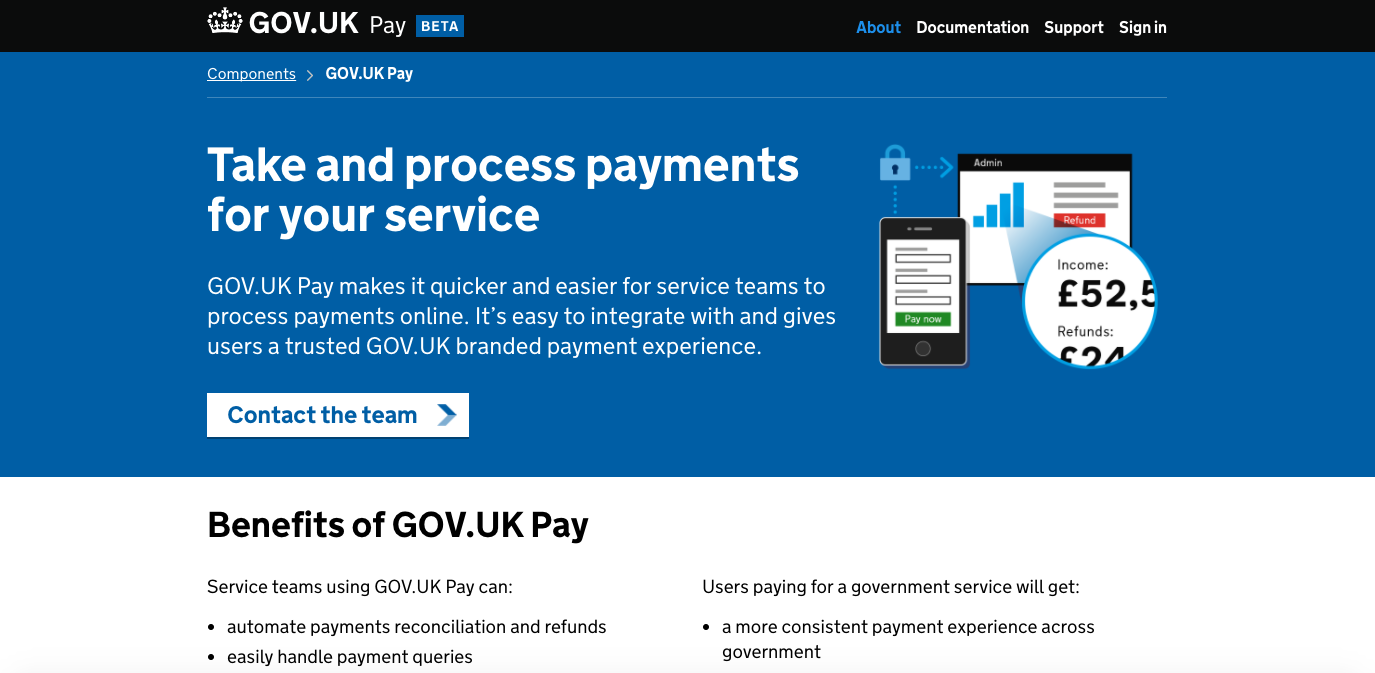At the start of the year we launched the Service Toolkit. It’s a single page bringing together all the available things to help teams that are building government services.
As we said in our blog post about the Service Toolkit, one of the user needs for the page was to make service teams aware of the different resources available to them.
In response to this user need, we’re also introducing new product pages and a new technical documentation format that can be used by the resources the Service Toolkit links to. To provide consistency and help users recognise that a resource is provided or curated by GDS.
The user need for consistency
There are a number of ‘products’ that GDS offers to the rest of government. These include software components like GOV.UK Pay and GOV.UK Notify.
These different products and components have been designed, built and are operated by different product teams, all following the Government as a Platform approach. They all looked slightly different.
The teams that run the different products carried out user research with their service team users, and they found that people want to be able to recognise products that came from GDS.
To help achieve this, we wanted to provide one product page design and one technical documentation format that could be used by all these different things.
Creating the product pages
The new product landing pages use a blue banner for visual consistency. They all have short sentences at the top of the page that describe what the product does. For example, the GOV.UK Pay product page says: ‘Take and process payments for your service’, and the GOV.UK Notify page says: ‘Send emails and text messages to your users’.

The pages all have ‘Contact the team’ buttons that allow service teams to contact the GDS teams in charge of them. They also link to the product’s technical documentation – the information that describes how the product operates and can be integrated.
But we also had to make sure that we balanced this consistency with flexibility. The pages need to work for a number of different types of products.
So, teams can change the options on the top navigation. They can add links to trial accounts. And they can embed videos explaining how the product works.
The teams running each product will carry out user research, and the product pages can be iterated in response to this.
Creating the technical documentation
In the same way that we found teams using lots of different formats for product pages, we also found they were using different templates for their technical documentation.
Lots of teams were using existing platforms, such as Gelato and Github Pages, so we carried out an audit to see if there was a platform that we might be able to build on.
We decided to build a template based on the static site generator Middleman. We tailored the platform to suit the needs of the users, who are generally developers, and the technical writers who would create content for it. We also worked to make it accessible.
The technical documentation is currently formatted as a single web page. In the user research this came back as something developers are comfortable with – we saw them using the ‘Command-F’ keyboard shortcut to search for words and phrases on the page.
It was also important that we made sure that the layout was responsive. This is because we observed that developers often use multiple, resized windows on their screens for coding, documentation and previewing their work. On smaller browser windows and mobile devices, the table of contents presents as a full-screen overlay.

Using the new product pages and technical documentation
All the products linked from the Service Toolkit are currently using versions of the new product pages. GOV.UK Platform as a Service is using the new technical documentation format and the other product teams will implement it soon.
We’re iterating both of these things based on feedback from the teams who are using them.
We’ve also published an example of the product page and a template for technical documentation.
Follow GDS on Twitter, and don’t forget to sign up for email alerts.

